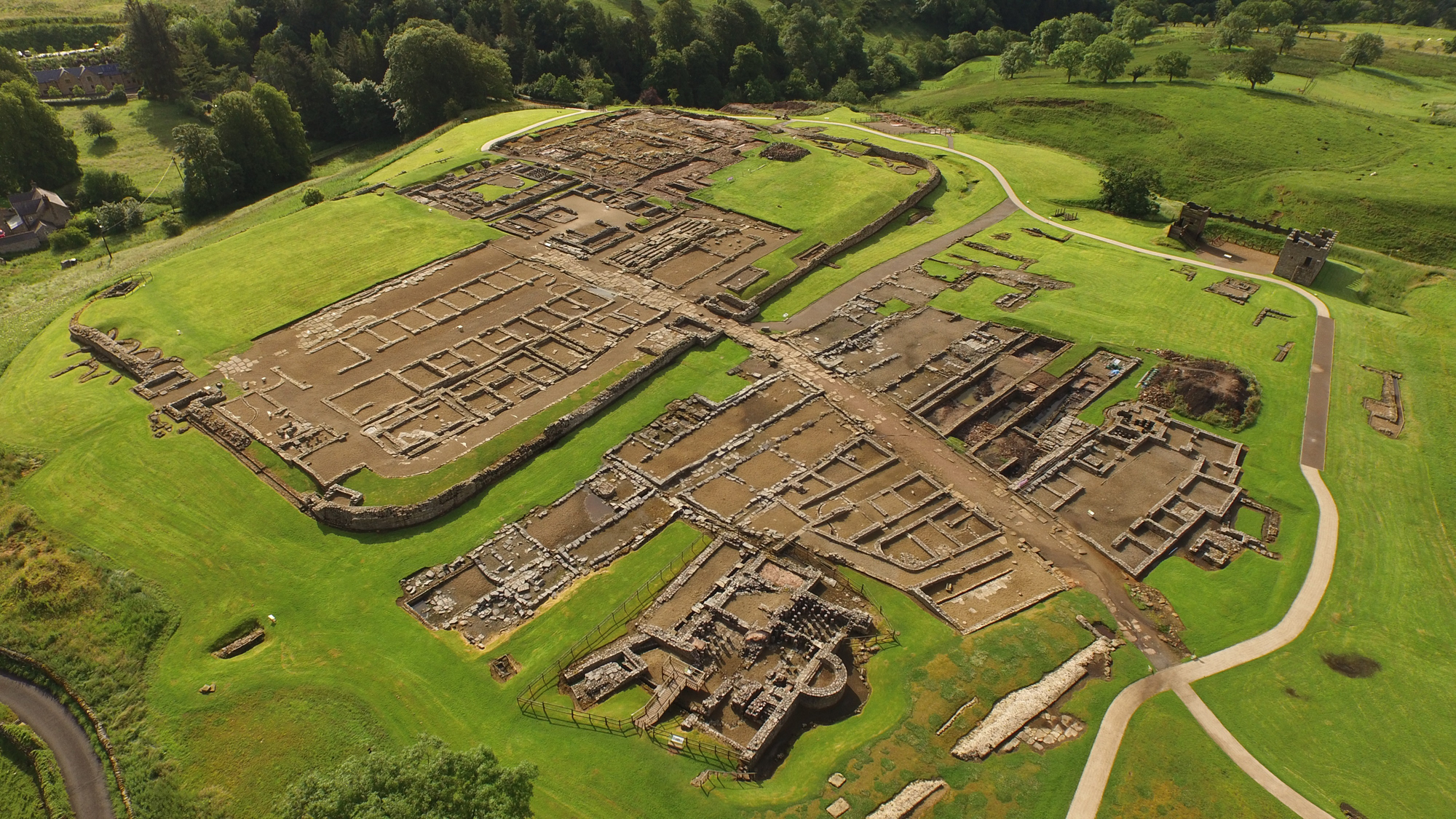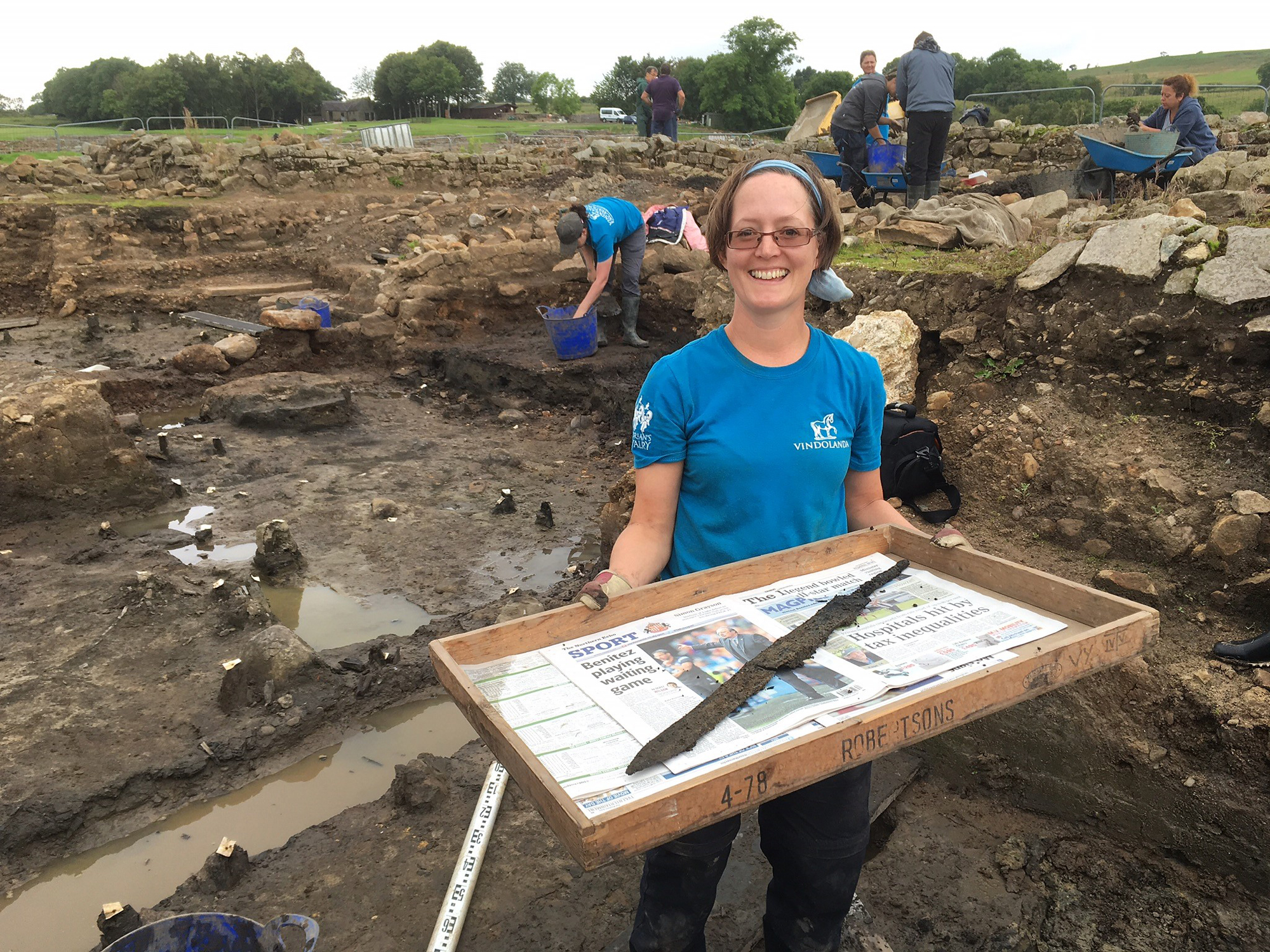Ancient Action Figures: Toy Swords Unearthed at Roman Fort

Military brats of ancient Rome probably played soldier to pass the time.
That's according to new evidence from Vindolanda, a fort found just south of Hadrian's Wall.
The garrison is located in modern-day Northumberland, England, but 2,000 years ago, it would have been found at the northern edge of the Roman Empire. Archaeologists who have been excavating the cavalry barracks at the fort this summer found two wooden toy swords, one with a polished stone in its pommel.
"The toy swords are evocative, and it is easy to see young boys and girls playing soldiers, mimicking their fathers and brothers," archaeologist Andrew Birley, the director of the excavations, told Live Science.
Birley's team discovered the toys after lifting the stone foundations from a more recent renovation of the fort. They found damp, black, oxygen-free soil sealed underneath —good conditions for preserving artifacts. [See Photos of the Latest Vindolanda Fort Finds]

The archaeologists uncovered the remains of the abandoned horse stables, living accommodations and fireplaces of the military complex, dating back to about A.D. 120. In those rooms, the team found arrowheads, writing tablets, leather shoes, combs and hairpins; in adjacent rooms, the researchers found two remarkably well-preserved iron swords, one with a bent tip.
"To find two complete swords in separate rooms but only 2 meters [6.6 feet] from one another is incredibly rare," Birley said. "You normally only find complete examples of those in national museums, like the few in the collection of the National Museum of Scotland, and then they only have a few."
Sign up for the Live Science daily newsletter now
Get the world’s most fascinating discoveries delivered straight to your inbox.
Vindolanda was built in the late first century A.D., before Hadrian's Wall was constructed in A.D. 122 to consolidate the border between the Roman Empire and the unconquered British tribes in the north.
Researchers have estimated that more than 1,000 soldiers lived at this site with another several thousand women, children, slaves and freedmen. "The range of artifacts, not just toy swords but also ladies' and children's shoes and bath clogs, show that the fort had a mixed community living inside the barracks," Birley said. The barracks were most certainly cramped and probably stunk of "leather, rusting armor, sweat, charcoal and smoke, and of course, horses and dogs, all combined," he added.
Vindolanda is famous for its collection of hundreds of handwritten letters on postcard-size wooden tablets, which archaeologists began discovering in the 1970s. These documents offered a rare snapshot into everyday life at the garrison, from requests for more beer and birthday party invitations to more bureaucratic matters like work assignments and military promotions. The collection even includes one of the oldest examples of women's handwriting in Latin, in the correspondence between the wives of two military commanders.
In July, Birley's team announced the discovery of another batch of fragile wooden letters. The latest excavation season still has another two weeks before it finishes, so more discoveries could be on the way, Birley said.
"Who knows what will come out in those two weeks," he said.
Original article on Live Science.










